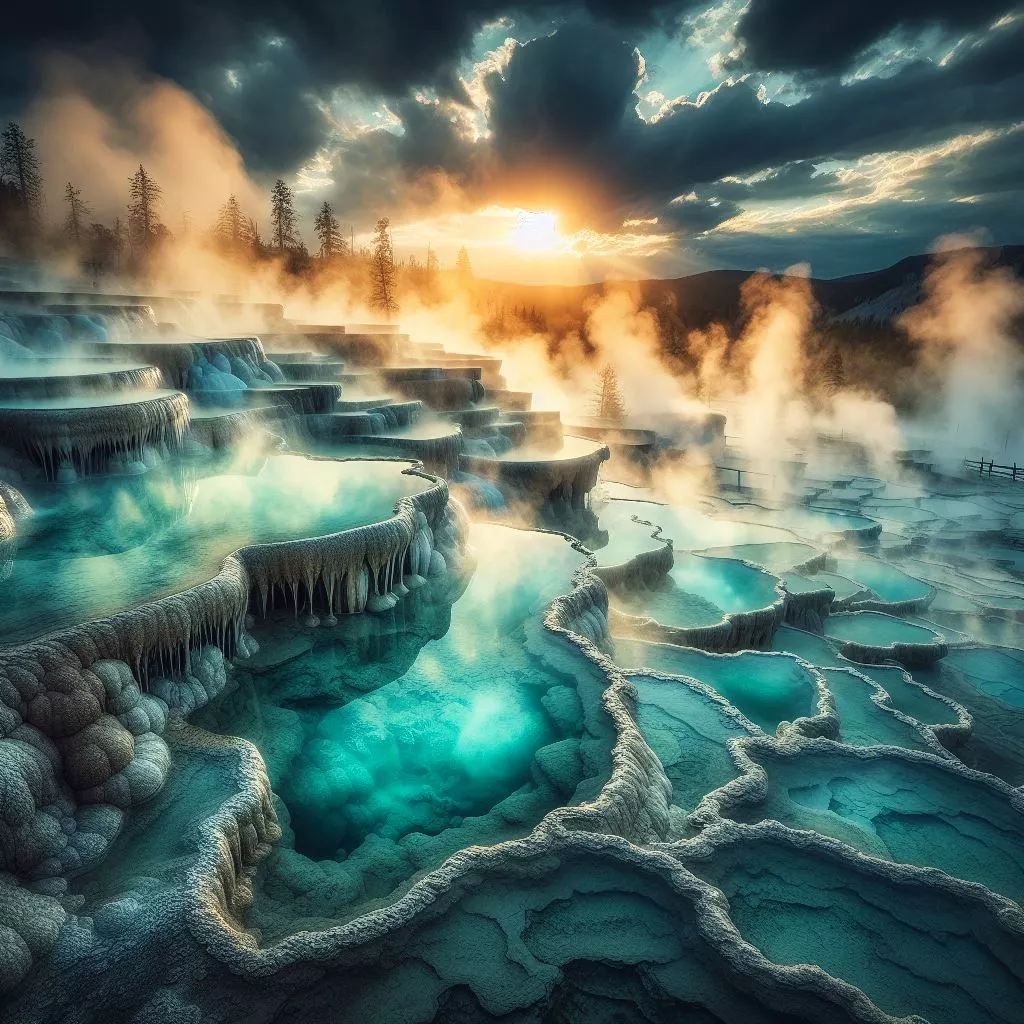Want to impress your friends with your knowledge of Montana’s fascinating past? Here’s one fun fact about Montana that’s sure to surprise them. From the intrepid Lewis and Clark Expedition to the Battle of Little Bighorn, Montana has a rich history full of intriguing events and characters. Read on to uncover more entertaining trivia about the Treasure State’s storied past that will wow anyone interested in Big Sky Country.
Introduction
Montana has a rich and storied history stretching back over 12,000 years. From the days of early Native American inhabitation to frontier exploration and major historical events, there are countless fascinating facts about the Treasure State’s past. Here we will explore one particularly interesting piece of trivia related to Montana’s history along with other captivating events and people that shaped this rugged land.
Lewis and Clark Expedition
In 1804, President Thomas Jefferson commissioned the Lewis and Clark Expedition to explore the vast Louisiana Purchase territory acquired from France. The expedition spent more time in what is now Montana than any other area during their monumental journey west from St. Louis to the Pacific Ocean.
Important Explorers
Jefferson chose two men to co-captain the expedition:
- Meriwether Lewis – Lewis was Jefferson’s personal secretary and an experienced explorer familiar with parts of the Louisiana Territory from earlier travels. Jefferson knew Lewis possessed the skills needed to lead a perilous transcontinental journey.
- William Clark – Clark was Lewis’ close friend and former military commander. He complemented Lewis’ leadership with frontiersman skills like hunting, navigating, and commanding soldiers that would prove invaluable during the expedition.
Together Lewis and Clark assembled a select team known as the Corps of Discovery to embark on the historic mission. Their mandate was to explore the Missouri and Columbia Rivers in search of a possible water route to the Pacific, make diplomatic contact with Native American tribes, map the geography of the region, and study its plants, animals and natural resources.
Notable Discoveries
While traveling through Montana during 1805-1806, Lewis and Clark made some of their most notable discoveries that were completely unknown to other Americans at the time:
- Great Falls – This awe-inspiring series of five waterfalls and rapids along a 10-mile stretch of the Missouri River in north central Montana was the largest obstacle of the entire expedition. Lewis called it “the grandest sight I ever beheld.” Clark noted, “I shall call this place the great falls of the Missouri.”
- Grizzly bears – The men killed their first grizzly bear near present-day Missoula. Since grizzlies were uncommon back East, Lewis and Clark referred to them as “white” or “brown” bears in their journals. They were the first Euro-Americans to document grizzlies.
- More tribes – The expedition met more different Native American tribes in Montana than anywhere else. This included first contact with the Lemhi Shoshone, Flathead, Nez Perce and others. Translating services proved vital to councils with dozens of tribal leaders.
- Headwaters – Near Lemhi Pass on the Montana-Idaho border, the men reached a key milestone – the waterways forming the Missouri River, Columbia River and streams reaching the Pacific. They had crossed the Continental Divide.
- Pompeys Pillar – William Clark carved his name and the date into a sandstone bluff along the Yellowstone River. This graffiti is now protected in a national monument.
Impact on Montana
The Lewis and Clark Expedition had an enormous impact on the region that would become Montana:
- Put the area on the map for the young United States through published maps and journals
- Paved the way for fur traders, explorers and gold miners to come, spurring interest in the Northwest
- Led to the establishment of towns, forts, missions and homesteads
- Introduced horses and tools to Native tribes altering their lifestyle
- Resulted in Montana eventually becoming a U.S. territory and state
- Left a legacy including statues, memorials and places bearing Lewis and Clark names across Montana
The pioneering expedition opened up Montana and the Northwest to American expansion, setting the stage for the Treasure State’s dynamic history to come.
The Battle of Little Bighorn
The Battle of Little Bighorn, also known as “Custer’s Last Stand,” was the legendary June 1876 clash between the U.S. Army’s 7th Cavalry led by Lt. Colonel George Armstrong Custer and an enormous alliance of Lakota, Northern Cheyenne and Arapaho fighters. The Native American victory over the 7th Cavalry along the Little Bighorn River in southeastern Montana was one of the greatest triumphs of the Plains Indian Wars. It was an ignominious defeat for the U.S. military that forced a change in strategy toward Indigenous tribes as the frontier pushed west.
Main Figures
The key figures in the Battle of Little Bighorn were:
U.S. 7th Cavalry
- Lt. Colonel George Armstrong Custer – Charismatic Civil War hero who led troops into battle. Against orders, he prematurely attacked a massive Native encampment with 647 soldiers organized into three battalions.
- Major Marcus Reno – Led one battalion that was forced to retreat across the river after attacking the south end of the camp. Joined by Captain Frederick Benteen’s battalion, they took up a defensive position that withstood repeated attacks.
- Captain Frederick Benteen – First searched for hidden villages south of the encampment before joining Reno. He led a battalion that also withstood Native attacks during the battle.
Native Alliance
- Sitting Bull – Revered Lakota medicine man who rallied warriors from various tribes to defend their territory and way of life. Though present, did not lead during the actual battle.
- Crazy Horse – Legendary Lakota war leader who orchestrated the encirclement and defeat of Custer’s battalion on what became known as Last Stand Hill.
- Gall – Lakota combat leader who helped decimate Custer’s battalion. Led forces that hammered Reno and Benteen’s defensive position.
- Chief Two Moons – Prominent Cheyenne chief who fought at Little Bighorn. Later became known as a peace mediator.
Significance
The Battle of Little Bighorn was extremely significant for both the Native American tribes and the United States government:
- Dealt the U.S. Army its worst defeat at the hands of Native forces during the Plains Indian Wars
- Inspired other tribes to increase resistance to American expansion into the Black Hills and Powder River Country
- Marked the end of Lakota and Cheyenne military resistance after the battle provoked a crushing U.S. response
- Provided a major symbolic victory as the Sioux and Cheyenne rallied to defend their nomadic way of life
- Sparked controversy over Custer’s reputation as Civil War hero versus Indian fighter
- Led to reforms improving the professionalism, training, equipment and tactics of the U.S. cavalry
Lasting Effects
The Battle of Little Bighorn had numerous important and long-lasting effects in the United States:
- Shocked and outraged many Americans, sparking calls for vengeance
- Further inflamed racial tensions between Native Americans and whites
- Led to the rapid growth of the legend of Custer as a glorious martyr in popular culture
- Marked the Lakota Sioux and Cheyenne as formidable adversaries to be crushed militarily
- Resulted in the U.S. seizing the sacred Black Hills and harsher policies toward Natives
- Today, the Little Bighorn Battlefield National Monument preserves the site of “Custer’s Last Stand”
- Debates continue over whether Custer made tragic mistakes or was overwhelmed by forces too large to overcome
The disastrous loss of Custer and over 260 7th Cavalry troops forced the frontier army to adjust strategies and deploy even more resources to subdue the Plains tribes. But the courageous Native American triumph resonated long after the guns fell silent.
Jeannette Rankin: Pioneering Politician
Montana politician Jeannette Rankin made history on multiple occasions as an elected leader ahead of her time. both locally and nationally Rankin shattered stereotypes about women’s roles in the early 1900s.
Trailblazing Representative
In 1916, Rankin was elected as the first woman to ever serve in the U.S. Congress after leading a grassroots campaign. Her victory came four years before the 19th Amendment guaranteed women’s voting rights nationwide. She won one of Montana’s two At-Large House seats despite resistance from those who said a woman had no place in politics. Her 1916 Congressional win opened the door for women in federal elected office.
Patricia’s Peace Policy
During her first term, Rankin voted against the declaration of war on Germany in 1917 despite enormous pressure. A lifelong pacifist, she insisted she could not vote for war given the chance as a woman to stop it. Though ostracized for this controversial stance as the lone dissenting vote, she stood firm in her convictions. She valued peace and human life above political fallout. Her conscience trumped party loyalty. This act of bravery was a defining moment of her career.
Women’s Suffrage Advocacy
Throughout her life Rankin actively campaigned for women’s equal voting rights. She practiced what she preached about women demanding the vote by running for Congress in 1916 before the 19th Amendment passed. After leaving Congress, she dedicated herself to the suffrage movement until the amendment finally guaranteed women nationwide voting rights in 1920.
Return to Congress
In 1940, Rankin ran for a U.S. House seat from Montana once again and won a stunning come-from-behind victory. She served another term in Congress advocating for non-intervention in WWII amid the climate of impending war. Her anti-war stance was again controversial, but she remained committed to pacifism. Though she lost re-election, she left a bold legacy.
Women’s Rights Champion
Beyond suffrage and peace, Rankin introduced legislation as a congresswoman to grant women citizenship status independent of husbands along with advocating for employment, healthcare and gender equality reforms. Throughout her groundbreaking political career and life, Rankin was an uncompromising voice for women’s rights and pacifist ideals at a time when both were extremely unpopular.
Other Notable Montana History Facts
Beyond the Lewis and Clark Expedition, Battle of Little Bighorn, and Jeannette Rankin’s achievements, Montana history is filled with many other captivating events, places and people from prehistoric times to recent decades:
- Early inhabitants – The region was inhabited by Indigenous peoples for over 12,000 years including the Clovis, Blackfeet, Crow, Sioux, Kootenai and many more tribes. Arrowheads and artifacts document their diverse cultures.
- Frontier era – Fur trappers and traders like Jim Bridger and John Colter explored Montana starting in the early 1800s paving the way for settlers. Virginia City and Bannack arose as frontier mining boomtowns.
- Homesteaders – The 1862 Homestead Act brought an influx of homesteaders staking land claims for farming and ranching across Montana’s open landscapes.
- Wild West legends – Butch Cassidy and the Sundance Kid had their famous hideout at the Hole-in-the-Wall in southeast Montana. Sheriff Henry Plummer notoriously led the “Innocents,” a secret gang of road agents around Virginia City.
- Copper king rivalry – The “Copper Kings,” industrialists William Clark, Marcus Daly and F. Augustus Heinze, became bitter business rivals dominating Butte’s lucrative copper mining industry in the Gilded Age.
- National parks – Montana is home to America’s first national park, Yellowstone, established in 1872 along with Glacier National Park and other breathtaking protected landscapes.
- Battlefields – Little Bighorn and other battlefields commemorate Montana’s role in the Indian Wars. Over 700 historic sites document Montana’s frontier military past.
- 1889 statehood – Montana became the 41st state on November 8, 1889 after settlers flooded in due to mining, ranching, farming and railroads.
- Prohibition era – Montana became a hotbed for bootleggers and gangsters trafficking illegal liquor from Canada during national Prohibition from 1920 to 1933.
- Mike and Maureen Mansfield – This influential Montana couple made great political strides. Mike Mansfield served an unprecedented 16 years as U.S. Senate Majority Leader. His wife Maureen was a trailblazer for equal rights.
From the earliest inhabitants and intrepid explorers to the rise of agriculture, railroads, mining and more, Montana has an incredibly rich history. The state’s past is full of fascinating events, innovations and colorful characters who shaped Big Sky Country. The Treasure State continues to build on its storied history moving into the future.
Conclusion
From Native cultures like teepees and buffalo hunting to frontier forts and vigilantes to the election of Jeannette Rankin and beyond, Montana has a diverse, eventful history. Lewis and Clark’s courageous expedition, Custer’s controversial last stand, the election of Rankin as the first Congresswoman, and countless other events combine to make Montana’s past exceptionally storied and fascinating. The Treasure State’s captivating history is full of intriguing trivia and pivotal moments waiting to be uncovered by intrepid explorers of the past.




